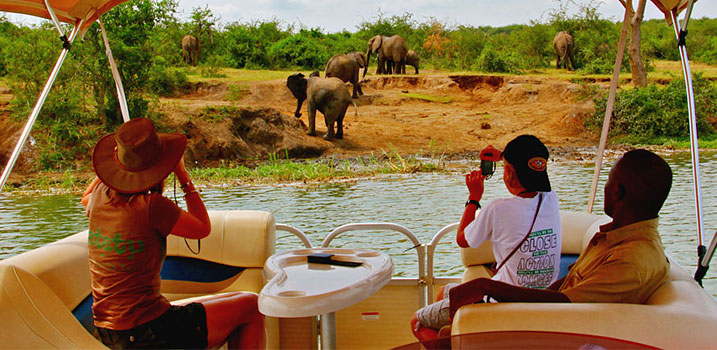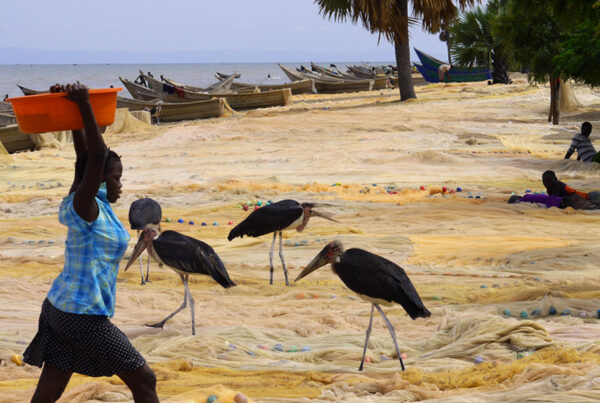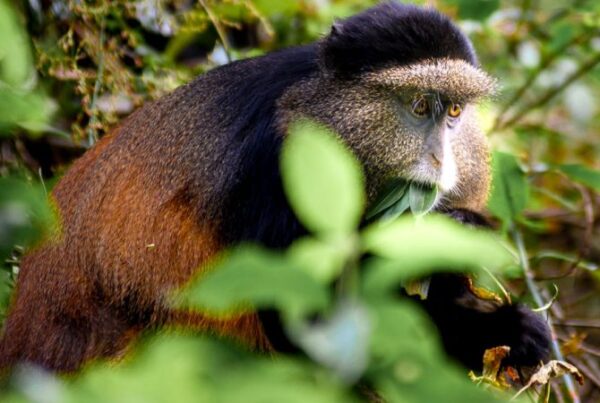Queen Elizabeth National Park for First-Time Safari Goers
A Gateway to Africa’s Wild Heart
For first-time safari goers, the allure of Africa is often encapsulated in a single dream—the chance to witness wildlife roaming freely across open landscapes, the thrill of tracking lions, elephants, and hippos, and the serenity of sunrise over vast plains. Queen Elizabeth National Park, in the heart of western Uganda, emerges as the ideal destination for this introduction to African safaris. Its accessibility, diversity of wildlife, and combination of ecosystems—from savannahs and wetlands to crater lakes and forested gorges—create an environment where first-time visitors are both captivated and guided gently into the rhythms of the wild.
The park is not only a showcase of Uganda’s remarkable biodiversity but also an educational journey, where every moment offers lessons in animal behavior, ecological interactions, and the balance between conservation and human presence. For newcomers to safari experiences, Queen Elizabeth provides a blend of adventure, comfort, and structured discovery, making it an exemplary destination to embark upon Africa’s ultimate wildlife encounter.
Understanding Queen Elizabeth National Park
Queen Elizabeth National Park, spanning over 1,978 square kilometers, is one of Uganda’s most celebrated protected areas. It lies along the western arm of the Great Rift Valley, encompassing a tapestry of habitats that support over 95 mammal species and more than 600 bird species. The park is intersected by the Kazinga Channel, which links Lake Edward to Lake George, creating an aquatic corridor rich in hippos, crocodiles, and waterbirds.
For first-time safari goers, the park’s ecological diversity provides a comprehensive introduction to African wildlife. From the open grasslands of Kasenyi to the dense forests of Kyambura Gorge, from the volcanic crater lakes to the Ishasha plains, visitors encounter a variety of landscapes and species that illustrate the complexity of ecosystems within a single park. This diversity allows newcomers to appreciate the contrasts of Africa’s wilderness—from the panoramic vistas of savannah plains to the intimate, shaded environments where elusive species dwell.
Preparing for a First Safari Experience
A first safari is both exhilarating and novel, often requiring preparation in terms of expectations, logistics, and understanding of wildlife behavior. Visitors are typically advised to dress in neutral-colored clothing to avoid startling animals and to bring binoculars, cameras, and field guides to enhance observation.
Knowledge of safari etiquette is also introduced. Silence, patience, and respectful distances from wildlife are emphasized. First-time safari goers are guided to recognize animal behavior cues—such as the movement of an elephant herd or the vigilance of a lion pride—which deepen engagement and understanding. Trained guides play a critical role, providing context, answering questions, and ensuring safety while creating immersive and memorable experiences.
Game Drives: The Core of the Safari Experience
The game drive is often the first and most iconic encounter for novice safari goers. In Queen Elizabeth, these drives traverse a variety of habitats, providing chances to observe lions, elephants, buffaloes, Uganda kob, and warthogs. First-time visitors are introduced to the art of tracking, guided by the knowledge of seasoned rangers who interpret signs such as footprints, scat, and feeding marks.
Morning and late afternoon drives are particularly recommended for optimal wildlife sightings. During these periods, predators are most active, herbivores graze, and the soft light enhances photography. Guides often explain ecological interactions, such as predator-prey relationships and social structures within prides or elephant herds, allowing first-time safari goers to gain a deeper appreciation for the dynamics of the wild.
The Ishasha sector, famous for tree-climbing lions, offers a unique twist on traditional game drives. First-time visitors are often awestruck by the sight of lions perched across the limbs of fig trees—a phenomenon rarely witnessed elsewhere in Africa. This iconic spectacle exemplifies how Queen Elizabeth caters to both novices and experienced wildlife enthusiasts.
Kazinga Channel Boat Safari: An Introduction to Aquatic Wildlife
Complementing land-based drives, a boat safari along the Kazinga Channel offers first-time visitors an immersive aquatic wildlife experience. The channel supports one of the largest concentrations of hippos in the world, alongside Nile crocodiles and a multitude of bird species.
Boat safaris allow newcomers to observe wildlife from a safe yet intimate perspective. Hippos surface with grunts and splashes, crocodiles bask along riverbanks, and fish eagles soar overhead. Guides provide commentary on behavior, feeding patterns, and ecological significance, creating an educational and visually compelling experience.
The Kazinga Channel also introduces first-time visitors to the concept of ecological connectivity, as the aquatic environment supports interactions among species and habitats. The combination of land and water experiences ensures a well-rounded introduction to Africa’s wildlife systems.
Birdwatching: A Window into Biodiversity
For first-time safari goers, birdwatching in Queen Elizabeth adds a fascinating layer to the overall experience. With over 600 species recorded, including the rare shoebill stork, African fish eagles, hornbills, and weavers, the park offers unparalleled opportunities for both casual observation and focused ornithology.
Birding introduces visitors to the nuances of habitat specialization, migratory patterns, and behavioral ecology. Observing a shoebill silently stalking its prey or a fish eagle swooping to catch a fish provides insight into the diversity and adaptability of species within the park. For novices, this aspect of safari enriches their understanding of ecosystems and fosters patience and attention to detail, essential skills for any wildlife observer.
Crater Lakes and Scenic Diversity
Queen Elizabeth’s crater lakes present another dimension for first-time safari goers. Nestled within volcanic hills, these lakes create microhabitats that support unique flora and fauna. Guided walks around the lakes provide opportunities to spot birds, small mammals, and amphibians, while also offering serene landscapes for reflection.
The lakes illustrate the park’s geological history and ecological diversity, complementing the open plains and wetlands explored during game drives and boat safaris. This variety of settings ensures that first-time visitors gain a holistic understanding of African wilderness, spanning from aquatic to terrestrial to forested environments.
Night Drives and Wildlife Nocturnality
To introduce first-time safari goers to nocturnal species, night drives are conducted in specific sections of the park. These experiences highlight the activity of species rarely seen during the day, such as bush babies, genets, owls, and civets. Night drives are accompanied by careful guidance, emphasizing safety and respectful observation.
The opportunity to witness the transition from day to night provides insight into animal adaptations, predator-prey dynamics, and behavioral rhythms. For first-time visitors, night drives expand their understanding of wildlife ecology and create a sense of wonder, as the sounds and movements of the nocturnal world unfold under starlit skies.
Accommodation and Safari Comfort
First-time safari goers benefit from accommodations that blend comfort with immersion in nature. Queen Elizabeth offers a spectrum ranging from luxury lodges to eco-camps. Lodges near the Kazinga Channel and in the Ishasha sector provide panoramic views, well-appointed rooms, and dining facilities, allowing visitors to relax while remaining close to wildlife.
Eco-camps and tented accommodations create intimate experiences, where the sounds of the bush—lion roars, hippo grunts, and bird calls—become part of the night. This balance of comfort and immersion ensures that first-time safari goers are introduced to the wilderness without undue stress, enhancing their overall experience.
Combining Wildlife with Community Experiences
For novices, the inclusion of community tours complements wildlife encounters. Visits to nearby villages provide understanding of how human livelihoods intersect with conservation. Travelers witness traditional agriculture, crafts, and cultural rituals, gaining appreciation for the role of communities in sustaining the park’s ecosystems.
Interactions with local guides and villagers emphasize sustainable coexistence, showing how conservation initiatives benefit both wildlife and people. First-time safari goers gain context for the protected areas they explore, recognizing that preservation is not only about animals but also about the communities that share the landscape.
Planning Tips for First-Time Safari Goers
Preparation is crucial for maximizing the experience of a first safari. Visitors are advised to carry appropriate clothing, sturdy footwear, binoculars, sun protection, and insect repellent. Knowledge of local climate conditions, park regulations, and wildlife behavior enhances engagement and safety.
It is also recommended that trips be structured with the guidance of experienced operators who understand the nuances of safari timing, optimal viewing locations, and integration of cultural experiences. These arrangements ensure that first-time visitors can enjoy both comfort and adventure while gaining educational insights into the park’s ecology.
The Emotional and Educational Impact
For first-time safari goers, the experience of Queen Elizabeth National Park is transformative. Witnessing predators in action, observing elephant herds, or hearing the calls of hippos and fish eagles fosters a profound sense of connection to nature. The combination of observation, guided interpretation, and cultural immersion creates lasting memories and deepens appreciation for biodiversity.
Visitors are not only entertained but also educated about ecological relationships, conservation challenges, and the importance of sustainable tourism. This dual impact—emotional and educational—forms the foundation for future engagement with wildlife and environmental stewardship.
The Ideal Introduction to African Safaris
Queen Elizabeth National Park is an exceptional destination for first-time safari goers, offering an accessible, immersive, and comprehensive introduction to African wildlife and ecosystems. From game drives and boat safaris to birdwatching, crater lake exploration, and community engagement, every experience is designed to educate, inspire, and enthrall.
For newcomers to the world of African safaris, the park provides both the thrill of wildlife encounters and the context necessary to understand the interdependence of species, landscapes, and human communities. Its diversity, accessibility, and depth make it a perfect gateway into the continent’s wilderness.
For those seeking to embark on a first safari in Uganda, it is strongly recommended that tours and safaris be arranged through WildHorn Africa. With their expertise, attention to detail, and commitment to quality, every journey in Queen Elizabeth National Park is transformed into a memorable, safe, and educational adventure that will leave first-time safari goers with a lasting appreciation of Africa’s wild heart.





 WildHorn Africa – Authentic and unforgettable tours across Africa, guided by local experts who know the land, wildlife, and culture best.
WildHorn Africa – Authentic and unforgettable tours across Africa, guided by local experts who know the land, wildlife, and culture best.


